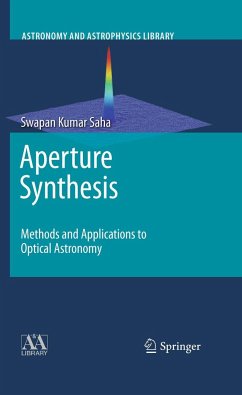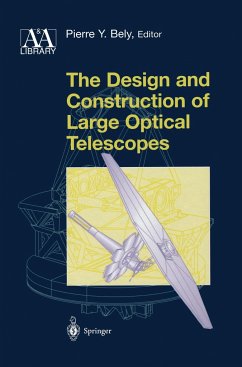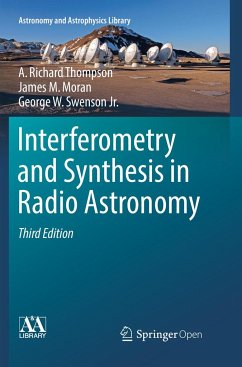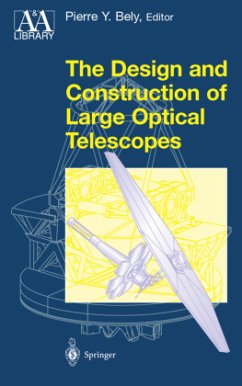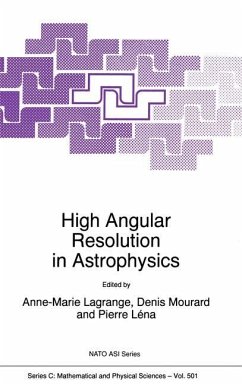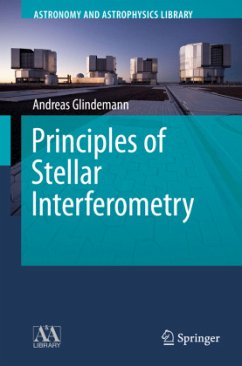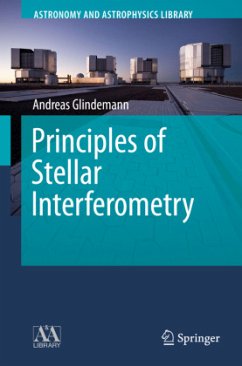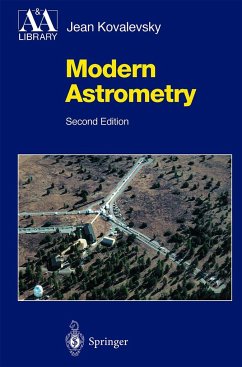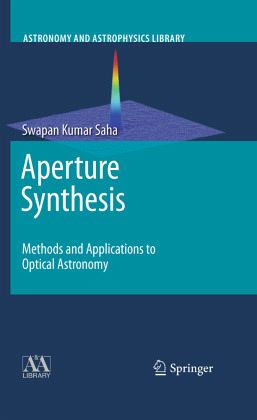
Aperture Synthesis
Methods and Applications to Optical Astronomy
Versandkostenfrei!
Versandfertig in 6-10 Tagen
38,99 €
inkl. MwSt.
Weitere Ausgaben:

PAYBACK Punkte
19 °P sammeln!
This book deals with the fundamentals of stellar interferometry with emphasis on aperture synthesis using sparse array of telescopes particularly at optical/IR wavelengths, the origin, properties, and optical effects of turbulence in the Earth's atmosphere, techniques developed to overcome image degradation. Studded with more than one hundred and fifty illustrations and tens of footnotes, it addresses the basic tricks of trade, current trend, motivation, methods, and path to future promise of true interferometry both from the ground and space. Also discussed are the technical challenge involve...
This book deals with the fundamentals of stellar interferometry with emphasis on aperture synthesis using sparse array of telescopes particularly at optical/IR wavelengths, the origin, properties, and optical effects of turbulence in the Earth's atmosphere, techniques developed to overcome image degradation. Studded with more than one hundred and fifty illustrations and tens of footnotes, it addresses the basic tricks of trade, current trend, motivation, methods, and path to future promise of true interferometry both from the ground and space. Also discussed are the technical challenge involved, such as beam transportation and recombination, detecting fringes using modern sensors, and image synthesis. Astronomical science that benefits from aperture synthesis imaging are highlighted as well. Over the years long baseline optical interferometry has slowly gained in importance and today it is a powerful tool. This timely book sets out to highlight the basic principles of long baseline optical interferometry.
The book addresses the fundamentals of stellar interferometry with emphasis on aperture synthesis using an array of telescopes particularly at optical/IR wavelengths. It discusses the fundamentals of electromagnetic fields, wave optics, interference, diffraction, and imaging at length. There is a chapter dedicated to radio and intensity interferometry corroborating with basic mathematical steps. The basic principle of optical interferometry and its requirements, its limitations and the technical challenges it poses, are also covered in depth.
Assisted by illustrations and footnotes, the book examines the basic tricks of the trade, current trends and methods, and it points to the potential of true interferometry both from the ground and space.
The book addresses the fundamentals of stellar interferometry with emphasis on aperture synthesis using an array of telescopes particularly at optical/IR wavelengths. It discusses the fundamentals of electromagnetic fields, wave optics, interference, diffraction, and imaging at length. There is a chapter dedicated to radio and intensity interferometry corroborating with basic mathematical steps. The basic principle of optical interferometry and its requirements, its limitations and the technical challenges it poses, are also covered in depth.
Assisted by illustrations and footnotes, the book examines the basic tricks of the trade, current trends and methods, and it points to the potential of true interferometry both from the ground and space.





